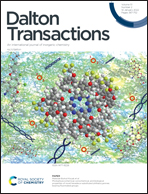In defence of oxidation states
Abstract
In this Perspective, some of the criticisms which have been made concerning the use of oxidation states are addressed, particularly in the context of the teaching of inorganic chemistry. The Oxidation State method and the Covalent Bond Classification method are compared and contrasted, and it is concluded that while each method has its strengths and weaknesses, both are important in teaching and it should be recognized that no single model or method is appropriate in all circumstances.

- This article is part of the themed collections: Dalton Transactions up-and-coming articles and 2021 Frontier and Perspective articles


 Please wait while we load your content...
Please wait while we load your content...